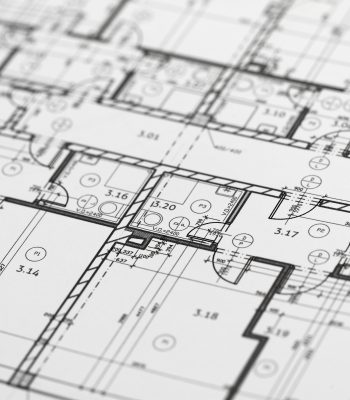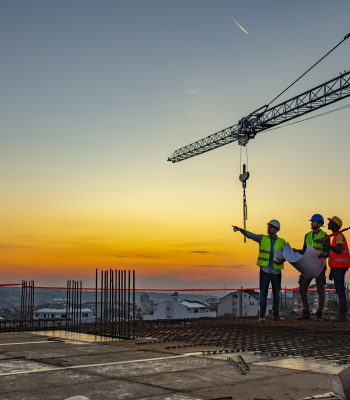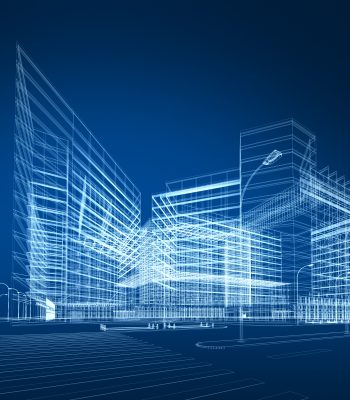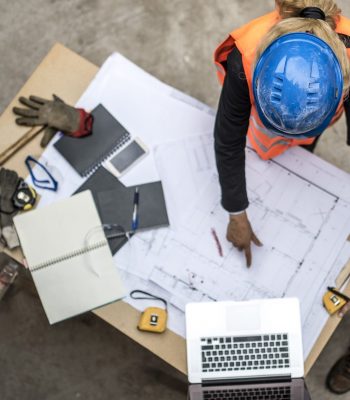Description
A building code sets out minimum requirements and standards for buildings and covers various aspects of health, safety and welfare – including energy performance. Relevant building energy codes typically consider lighting, walls and roofs, glazing, heating, ventilation and air conditioning. Building energy codes can vary in their degree of ambition and for nearly zero-energy buildings, one would typically incorporate sensors to automatically control lighting and water use, as well as centralised energy control systems to monitor and dynamically minimise energy use.[1] Effective implementation of building codes requires adequate approval and verification procedures, where the construction or major alteration of buildings must conform to the code to obtain planning permission, usually from a local council.
Building energy codes are often supplemented with building certification, labelling or information disclosure programmes. An energy certification and labelling process helps to ensure that the energy performance of a building is above a certain threshold and communicated to customers in an effective way. Certifications and labelling can be mandatory or voluntary. Mandatory certification can be used to ensure compliance with building codes and enable better enforcement. Energy certificates can further inform prospective owners and tenants about the performance of specific buildings and systems, and may offer recommendations on how to improve energy performance. Certification further raises awareness about energy efficiency and energy expenditures, with the potential to gradually ensure that a more efficient building stock is being demanded and subsequently supplied. Voluntary certification can be used if sellers or landlords want to distinguish themselves from their competitors. This allows them to inform consumers and help prospective purchasers to anticipate energy costs, and therefore increase the demand for energy-efficient buildings.[2]
While building energy codes may be driven by national authorities, local authorities have significant influence over implementation by means of the planning permission stage. Local authorities can also help promote energy efficiency standards through local requirements for information-sharing and through mandatory energy labelling of private and public buildings. Furthermore, municipal authorities can also facilitate information-sharing platforms and standards for voluntary energy-labelling schemes.

Resource implication and key requirements
As building energy codes become more sophisticated, they require additional expertise and continued efforts to develop and apply them as part of building permitting. Developing or revising a building energy code for local use may not require an excessive amount of resources. National templates can also be developed for more easy application at the local level.
However, effective implementation and enforcement of a building energy code requires city officials or accredited professionals to sign off on plans and the finalisation of building works – and this requires significant resources. The costs of verification and reporting can be passed on to private building sellers and buyers.
Due to the substantial upfront costs, it may be a solution to combine tighter building energy codes with financial incentives, as well as certification and labelling to improve consumer awareness and support enforcement. Tighter building codes may also be combined with expedited review of the permitting process and density or height bonuses if buildings meet particular sustainability criteria. For example, Mexico City’s Sustainable Buildings Certification Programme, a voluntary programme reflecting various levels of sustainability performance, offers a number of incentives, including property tax reduction and attractive financial schemes, to cover the cost of building upgrades, as well as expedited processing of construction permitting.[3] And lastly, in countries or cities with a flawed construction permit system and a large informal construction sector, it is important to dedicate resources to effectively manage the construction sector.

Potential private-sector participation
Building-code verification tasks can be carried out by accredited private professionals (who should lose their accreditation in cases of misconduct). They do, however, require careful consideration regarding which bodies can provide accreditation, in order to avoid one or more business associations managing this process in a monopolistic and non-transparent manner.
Local governments can work with commercial banks to provide financial incentives, therefore shifting the financial burden from the public to the private sector. One example is Frederikshavn in Denmark, which developed specific soft loans for the energy renovation of housing to meet its climate change targets. A new product was developed by the municipality in agreement with local banks, featuring a longer maturity period and lower interest rates, relative to typical market conditions.

Implementation obstacles and solutions
A tightened building energy code represents increased investment costs for owners of existing and new property. An extended information disclosure and labelling programme for existing buildings also requires more involvement and buy-in from property owners. Under such scenarios, it is natural that many stakeholders either oppose compliance or fail to contribute to the necessary arrangements. It should also be noted that a large number of stakeholders will need to develop adequate understanding and capacity – including stakeholders such as real-estate developers, architects, engineers, interior designers, regulators, inspectors, subcontractors, manufacturers of building materials and others.
Given these challenges, a gradual introduction of tighter building energy codes is recommended, along with a gradual rollout of extended labelling and information disclosure programmes. These should be combined with effective enforcement. A gradual approach can be pursued through a step-by-step increase in the required standards and required activities – which should be announced years ahead of implementation. A gradual approach can also be pursued by introducing higher energy-performance and reporting standards first as voluntary measures before making them mandatory. Successful implementation of building energy efficiency codes can take many years to achieve.
Denmark was one of the first countries to introduce nationwide energy efficiency standards for buildings. The energy requirements in the Danish Building Regulations for new buildings have been tightened, using a step-by-step approach, preparing the Danish industry for future requirements almost 10 years in advance. Moreover, the new requirements are introduced as voluntary energy classes before they become mandatory.

References
[1] Coins Global (2015), “Net Zero Energy Buildings (NZEBs): Building the Future”, February 2015.
[2] D. Broekhoff, G. Piggott and P. Erickson (2018), “Building Thriving, LowCarbon Cities: An Overview of Policy Options for National Governments”, Coalition for Urban Transitions, London and Washington, D.C.
[3] C40 Cities (2017b), “Urban Efficiency II: Mexico City – Sustainable Buildings Certification Program”, case study, February 2017.















